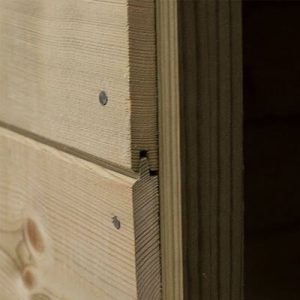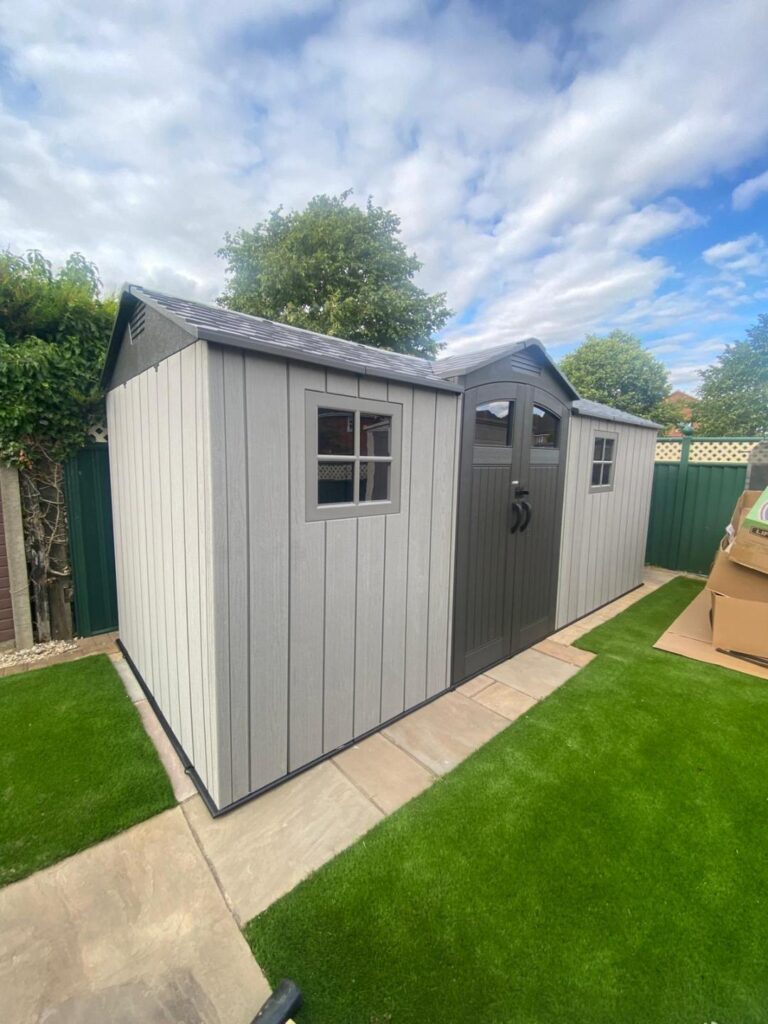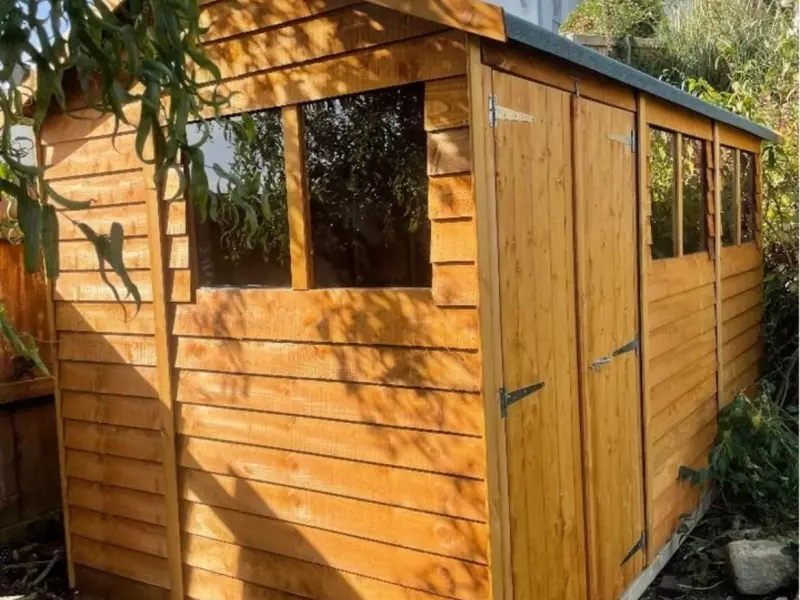Difference Between Overlap, Shiplap and Tongue & Groove
Difference Between Overlap, Shiplap and Tongue & Groove
When buying a timber shed, you may be looking at the aesthetics, the price and its quality; however, it might be easy to overlook the build and cladding.
Whilst cladding can often be mistaken as being a seemingly minor aspect of your garden shed, it can affect the strength, price and even what you can use it for. Therefore, it’s vital to know the difference between the different styles to help you find the perfect shed for you.
Overlap, shiplap and tongue and groove are different building styles, with the wooden panels all locking together differently. Each type offers positives and negatives, so read on to find out what build is best for you…
Overlap

Overlap, also known as feather edge, is the classic style of cladding for garden sheds and workshops, with an attractively traditional look.
The walls are made up of horizontal overlapping wooden boards which form a series of sloping surfaces running down the sides of the shed.
The boards are nailed at intervals to vertical beams that form the framework of the shed.
This simple but effective design allows rain to flow down the face of one board onto the one below, like tiles on a house roof, so water doesn’t have a chance to soak into the wood.
The boards are rough-sawn, giving the building a natural, rustic appearance that enables it to blend well into most traditional garden settings without being too obtrusive. The roof may have either a pent , apex or reverse apex design.
Overlap sheds and workshops are made of (mostly British) softwoods whereas shiplap tongue and groove sheds are usually made of pine, which is more expensive.
Because overlap structures are less costly to produce the selling price tends to be lower, making them an attractive option for buyers on a budget.
The popularity of overlap sheds in the UK has encouraged manufacturers to continue producing a huge range of different styles and sizes, ranging from narrow, low-cost sentry-type models to spacious workshops with ample scope for DIY, hobbies or large-scale storage.
Overlap is the most simple and easy to produce cladding for a wooden shed. The overlap build style features horizontal panels overlapping each other, with the bottom of each slat going over the top of the next.
The overlapping of the boards enables rainwater to run off with ease, so whilst it is watertight, the overlap design is not airtight and will, therefore, be vulnerable to draughts and damp air can enter the shed. For that reason, this type of construction is recommended for sheds that are used for storage only. If you intend to spend a lot of time in there, then you should consider a tongue and groove or a shiplap construction.
As overlap sheds are the quickest and easiest to produce, this method of construction is most commonly used on entry-level models. The overlap construction technique is tried and tested as it has been used for hundreds of years and overlap sheds are a common sight in many domestic gardens. The lower costs of this simple construction method make overlap sheds perfect for those who do not want or need to spend a lot of money on somewhere to store their garden equipment.
Advantages
Low construction cost. Ideal for storage
Disadvantages
Susceptible to draughts. Cannot attach shelving to the walls
Shiplap

Shiplap is a term used to describe a type of wooden board used commonly in the construction of sheds and outbuilding. The profile of each board partially overlaps that of the board next to it creating a channel that gives shadow line effects, provides excellent weather protection and allows for dimensional movement.
Shiplap cladding consists of wooden panels that overlap in such a way that they create a flat surface that is much more weather resistant than the overlap construction method described above. Each wooden board has overlapping lips that interlock, allowing water to run off whilst also providing better protection against draughts.
Shiplap cladding is more expensive to produce than overlap, therefore, sheds with this cladding do come with a higher price tag, however the extra protection from the elements and the extra security and visual appeal they provide make it the most preferred construction method for modern garden sheds. The construction is stronger, more weather resistant and creates a more visually appealing shed that is less susceptible to rot and warping.
The shiplap cladding is suited to those who will regularly be using their garden shed as a workshop, however, if you just need storage space, the overlap is more than sufficient.
Advantages
Good weather resistance. Neat appearance
Disadvantages
More expensive than overlap
Tongue and Grove

Tongue and groove is the most superior type of cladding used in the construction of a wooden shed. The tongue and groove construction technique is more likely to be used for larger sheds and other large wooden garden buildings. The cladding boards are created from planks of wood that slot into each other, interlocking and leaving no gaps. Due to this, the structure is extremely strong and durable and creates a shed with flat walls and an attractive appearance.
It is the most secure and weather resistant of the three constructions types, as the interlocking design means that there is no concern for moisture and draughts getting into the shed, as the tight seal will protect your shed from the elements.
Factoring in the strength, durability, weather resistant properties and it being the most time-consuming to manufacture, you can expect this construction type to be at a higher price due to the quality of the product.
Tongue and groove, often abbreviated to ‘T&G’, is a method of joining 2 or more separate flat objects together to form a single flat surface. These objects are usually made from wood.
Each piece has a slot cut along one edge. This is referred to as the ‘groove’. Along the opposite edge is a thin, deep ridge, which forms the ‘tongue’. The size of the ridge is slightly smaller than the depth of the slot.
Therefore, the tongue of one of the pieces fits snugly into the groove of the adjacent piece, joining them together to form a single wooden surface with a very tight seal.
Tongue and groove joinery is often used to build high-quality decking, flooring and garden buildings.
Advantages
Excellent weather resistance. Neat appearance. Strong construction
Disadvantages
High construction cost


